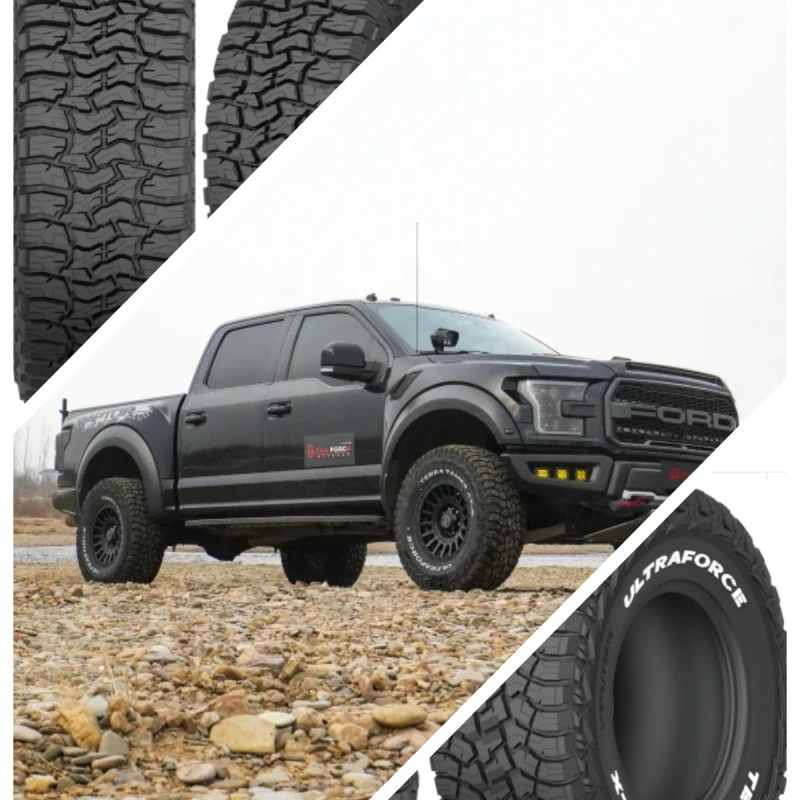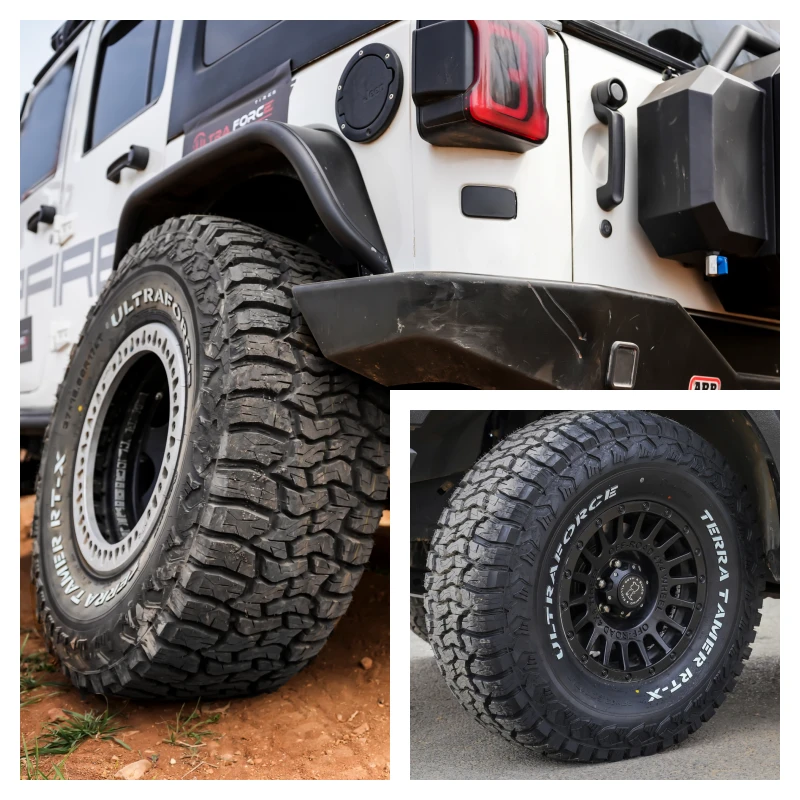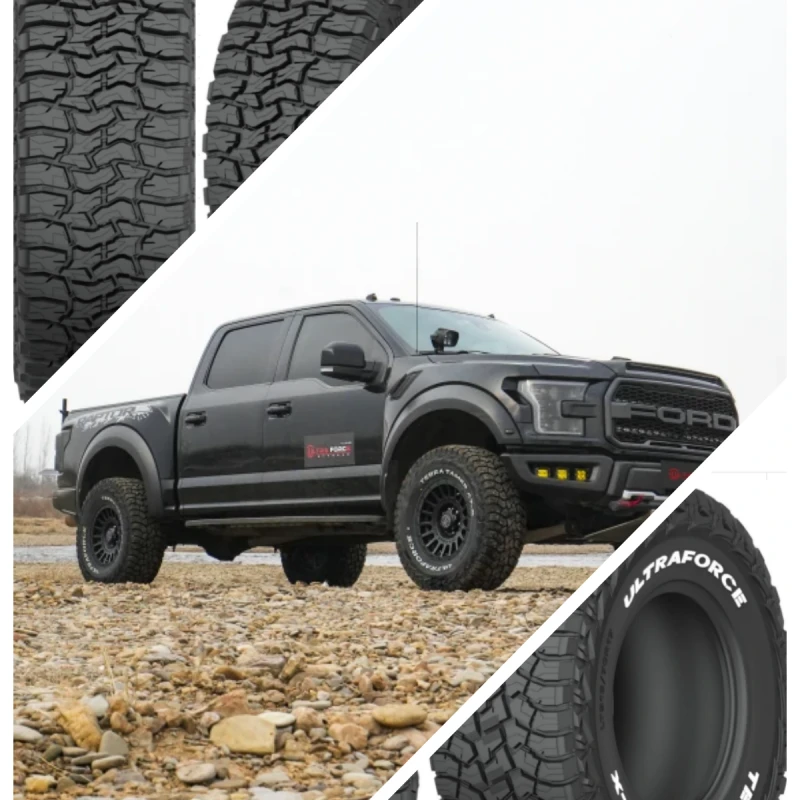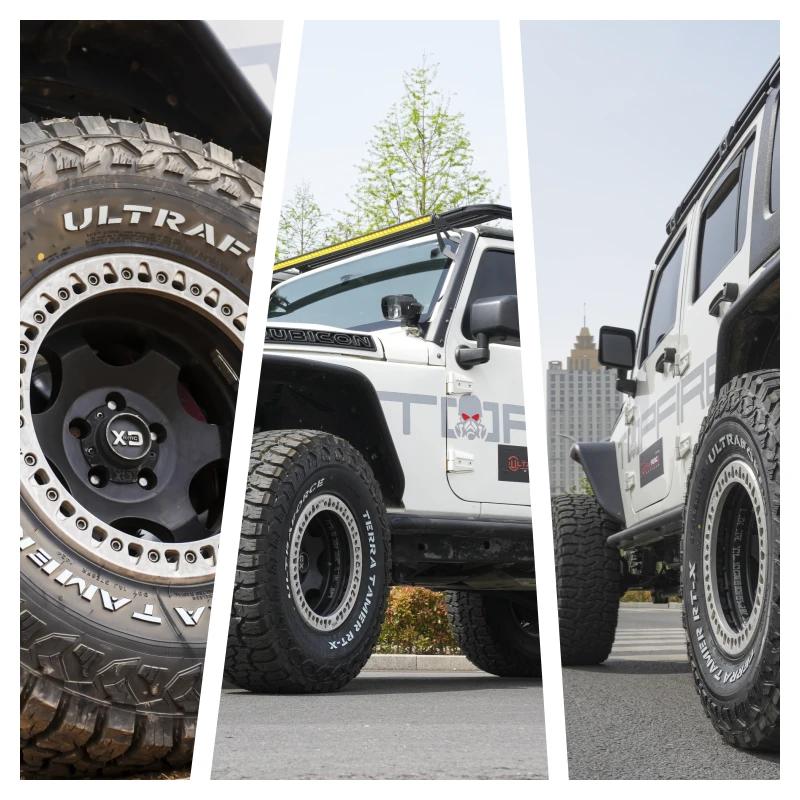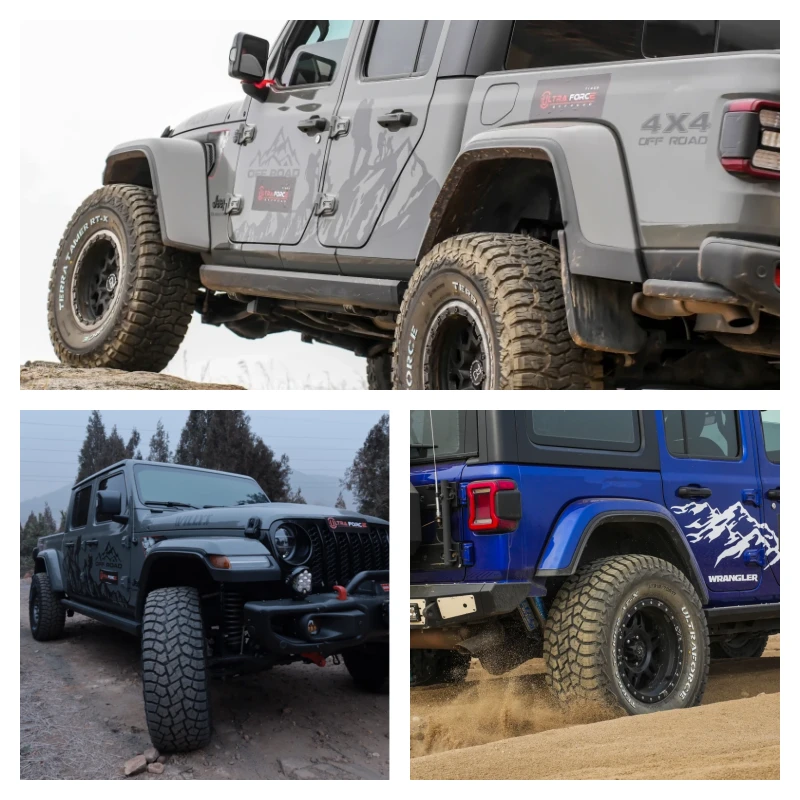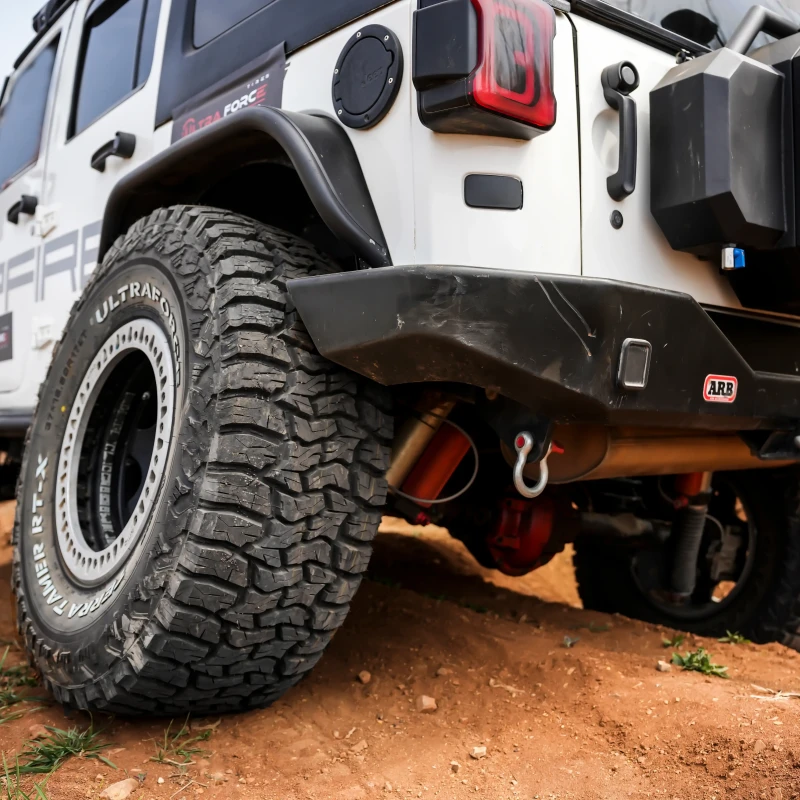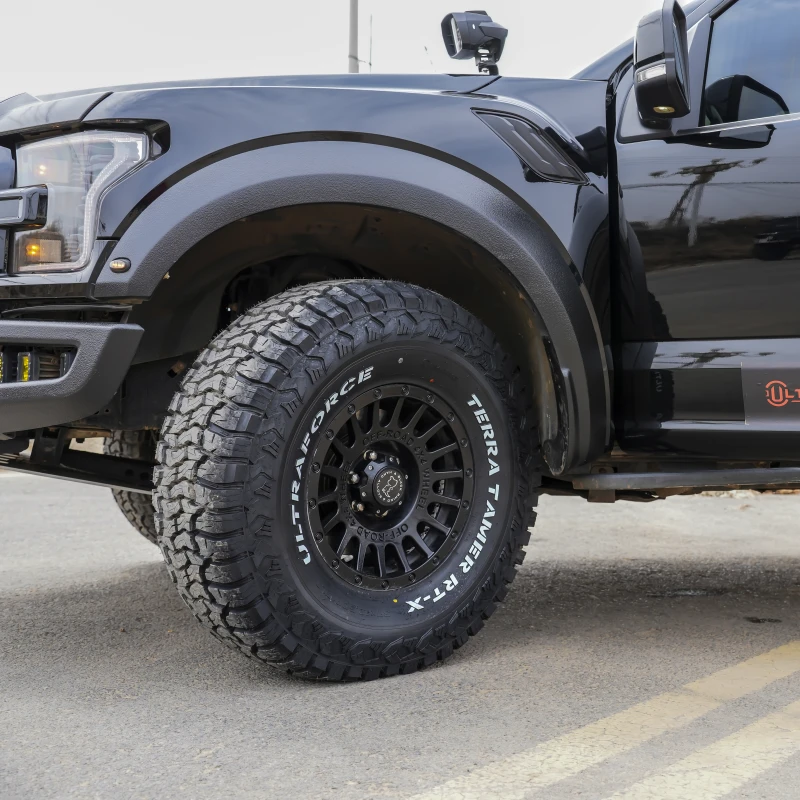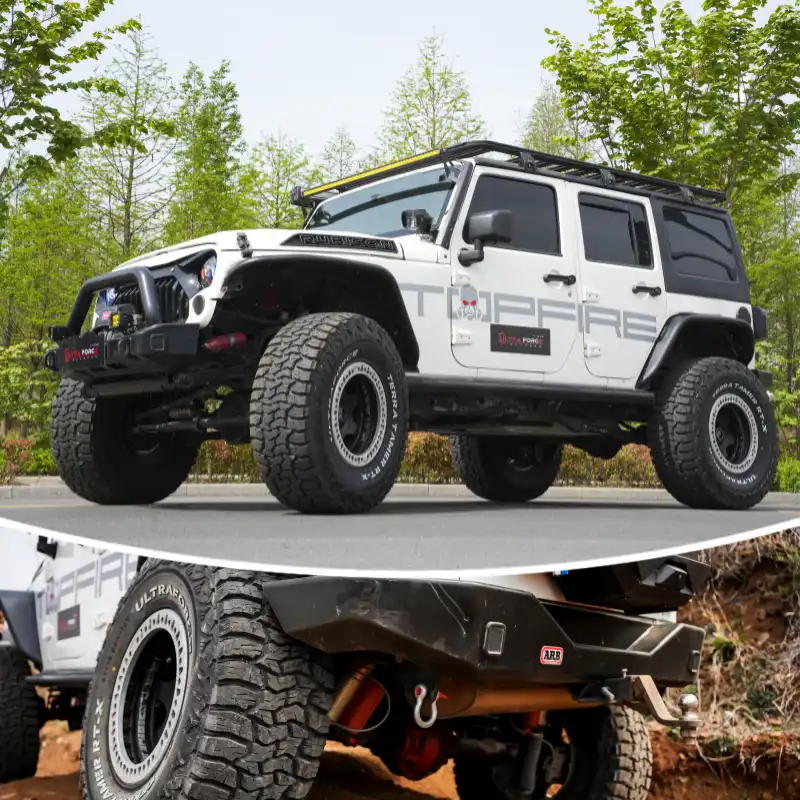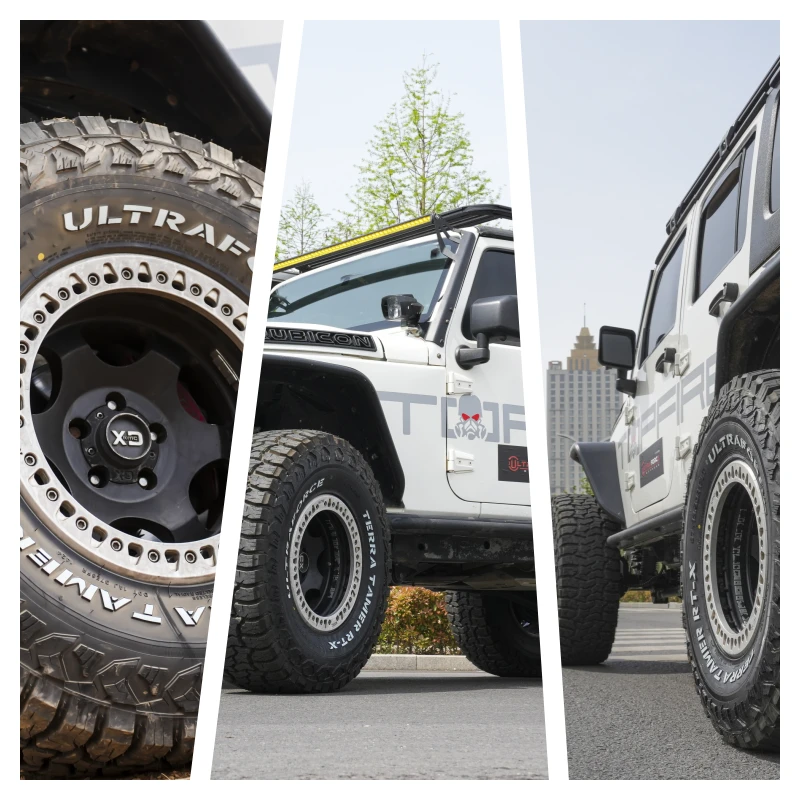All Terrain vs All Season Tires in Snow: Which is Better?
When discussing the choice between all terrain (AT) and all season (AS) tires for winter driving, it's essential to delve deeper into their respective features, performance characteristics, and how they impact overall safety and driving experience in snowy conditions. This extended discussion will further explore the nuances of each tire type, providing comprehensive insights to help drivers make informed decisions.
All Season Tires: Versatile Performers in Changing Seasons
All season tires are designed to provide adequate performance across a wide range of weather conditions, from dry summers to light winter precipitation. They are popular among drivers seeking convenience and a tire that can handle mild winter conditions without the need for seasonal changes. Here are the key aspects of all season tires:
Tread Design and Composition: All season tires typically feature a symmetrical or asymmetrical tread pattern designed to balance traction, handling, and comfort. The rubber compound is engineered to remain flexible in a variety of temperatures, contributing to consistent performance across different seasons.
Winter Performance: While all season tires are not specifically optimized for winter conditions, many modern models incorporate technologies to enhance traction in light snow and cold temperatures. These may include siping for improved grip on icy surfaces and specific tread designs that evacuate slush and water effectively.
Dry and Wet Performance: All season tires excel in dry and wet conditions, providing a smooth and quiet ride suitable for daily commuting and highway driving. They offer good stability and responsive handling in various weather scenarios, making them a versatile choice for drivers in regions with moderate seasonal changes.
Longevity and Comfort: Due to their year-round usability, all season tires are often praised for their durability and comfort. They typically have longer tread life compared to winter tires, thanks to their versatile tread compound and design.
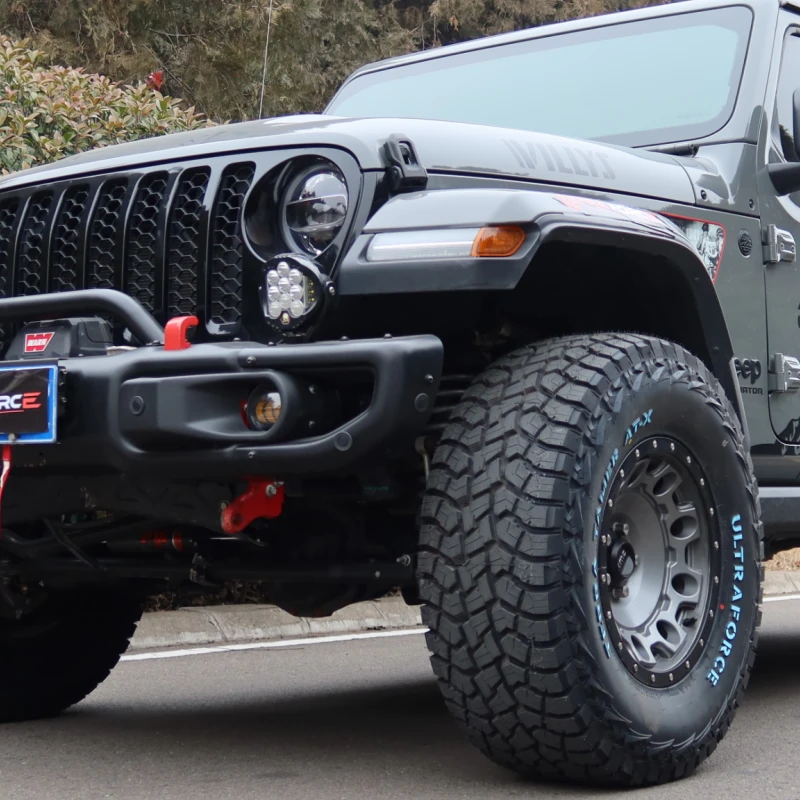
All Terrain Tires: Bridging On-Road Comfort with Off-Road Capability
All terrain tires are engineered for versatility, catering to drivers who navigate both paved roads and challenging off-road terrain. They are designed to handle rugged conditions, including snow-covered roads and trails, making them a popular choice for adventurous spirits. Here's what distinguishes all terrain tires:
Tread Design and Construction: All terrain tires feature an aggressive tread pattern characterized by larger, deeper tread blocks and increased void ratios. This design enhances traction on loose surfaces like snow, mud, gravel, and sand, crucial for off-road adventures and winter driving.
Winter Performance: While not classified as winter tires, many all terrain models are equipped with features that enhance winter performance. Some are branded with the Three-Peak Mountain Snowflake symbol, indicating they meet specific standards for severe snow service. These tires use specialized rubber compounds that remain flexible in cold temperatures, maintaining traction and grip on snowy and icy roads.
On-Road Comfort and Noise: Despite their off-road capabilities, all terrain tires are designed to provide acceptable on-road comfort and stability. However, they tend to produce more road noise compared to all season tires due to their aggressive tread pattern and larger tread blocks.
Durability and Off-Road Capability: All terrain tires are known for their durability and robust construction, capable of withstanding rough terrain and harsh conditions. They offer enhanced puncture resistance and sidewall protection, ideal for off-road excursions and driving in remote areas.
Choosing the Right Tires for Snowy Conditions: Factors to Consider
Making an informed decision between all terrain and all season tires for winter driving involves considering several critical factors. Here’s a detailed exploration to guide your choice:
Climate and Geographic Location: The severity and duration of winter weather in your region play a significant role in determining tire suitability. Areas with mild winters and occasional snow may benefit from the versatility of all season tires, while regions with heavy snowfall and icy conditions often require the enhanced traction of all terrain or dedicated winter tires.
Driving Habits and Terrain: Evaluate your typical driving habits and the types of roads you frequent. If your driving involves regular off-road excursions or traversing unpaved paths during winter, all terrain tires provide superior grip and durability. For predominantly urban or highway driving with occasional light snow, all season tires may suffice.
Safety and Performance: Winter tires, including all terrain options, are designed to enhance safety by improving traction, braking performance, and stability on snow and ice-covered roads. Consider the safety benefits of tires with the Three-Peak Mountain Snowflake symbol, indicating they meet stringent winter performance standards.
Long-Term Cost and Convenience: While all season tires offer year-round convenience and longer tread life, investing in specialized winter tires, such as all terrain models, can enhance safety and performance during winter months. Evaluate the long-term cost-effectiveness and benefits of each tire type based on your driving needs.
The Main Differences Between All-terrain and All-season Tires When Driving On Snow
When considering all terrain (AT) versus all season (AS) tires for driving in snow, several key differences impact their performance and suitability:
Tread Design and Performance:
Case Example:
Testing Performance: In controlled tests by tire manufacturers, all terrain tires consistently demonstrate superior traction on snowy surfaces compared to all season tires. For instance, tests conducted by UltraForce Tires showed that their Zelleron SnowMogul AT tires reduced braking distances by up to 20% on icy roads compared to their all season counterparts, highlighting the effectiveness of specialized tread designs in winter conditions.*
All Season Tires: All season tires are designed with a tread pattern that balances performance across different seasons, including light winter conditions. They typically feature moderate tread blocks with siping for enhanced grip on wet and icy surfaces. However, their rubber compound may stiffen in colder temperatures, reducing traction compared to dedicated winter tires.
All Terrain Tires: All terrain tires are engineered for versatility, with an aggressive tread pattern characterized by larger, deeper tread blocks and increased void ratios. This design enhances traction on snow, mud, gravel, and sand, making them suitable for off-road adventures and challenging winter conditions. Many all terrain tires also feature technologies that improve grip in cold temperatures, such as specialized rubber compounds that remain flexible.
Winter Certification and Symbols:
Case Example:
Real-World Performance: According to a study by a leading tire testing organization, vehicles equipped with all terrain tires with the 3PMSF symbol experienced fewer instances of skidding and better handling during simulated icy road conditions compared to vehicles fitted with all season tires without the symbol. This underscores the importance of choosing tires certified for severe snow service when driving in challenging winter environments.*
All Season Tires: While some all season tires are equipped with technologies to enhance winter performance, not all carry the Three-Peak Mountain Snowflake (3PMSF) symbol. This symbol certifies that tires meet specific industry standards for severe snow service, indicating superior traction on snow and ice-covered roads.
All Terrain Tires: Many all terrain tires feature the 3PMSF symbol, signifying their capability to perform well in severe winter conditions. This certification is crucial for drivers navigating regions with heavy snowfall and icy roads, providing assurance of enhanced safety and performance.
Durability and Longevity:
Case Example:
Field Testing: In field tests conducted by off-road enthusiasts, vehicles equipped with all terrain tires demonstrated resilience in winter conditions, including deep snow and icy trails. The tires maintained traction and stability over extended periods, showcasing their durability and reliability in challenging off-road and winter environments.*
All Season Tires: Due to their versatile design, all season tires typically offer longer tread life compared to winter tires. They are engineered to withstand a wide range of temperatures and road conditions throughout the year, making them a cost-effective choice for drivers in regions with mild to moderate winters.
All Terrain Tires: All terrain tires are renowned for their durability and robust construction, designed to withstand rough terrain and adverse weather conditions. While they may have a slightly shorter tread life compared to all season tires due to their aggressive tread pattern, they offer enhanced puncture resistance and sidewall protection, ideal for off-road enthusiasts and drivers navigating challenging winter landscapes.
All-terrain and All-season Tires for Driving Safety in Snow
The safety of driving in snow largely depends on choosing tires that provide optimal traction, stability, and control on snow-covered roads. Here’s how all terrain (AT) and all season (AS) tires compare in terms of safety during winter driving:
Traction and Grip:
Case Example:
Safety Studies: According to safety studies conducted by national transportation agencies, vehicles equipped with all terrain tires with the 3PMSF symbol demonstrated improved braking performance and reduced instances of hydroplaning on snowy roads compared to vehicles equipped with all season tires. These findings underscore the safety benefits of choosing tires specifically designed for winter conditions.*
All Season Tires: All season tires offer moderate traction in light snow and cold temperatures. Their tread patterns are designed to provide adequate grip on wet and dry surfaces throughout the year, including some capability on light snow. However, they may struggle in severe winter conditions due to their less aggressive tread design and rubber compound that can stiffen in freezing temperatures.
All Terrain Tires: All terrain tires excel in providing enhanced traction on snow, thanks to their aggressive tread patterns and specialized rubber compounds. Many all terrain tires are certified with the Three-Peak Mountain Snowflake (3PMSF) symbol, indicating they meet stringent standards for severe snow service. This certification ensures superior grip and performance on snow and ice-covered roads, enhancing safety and reducing the risk of skidding or loss of control.
Handling and Stability:
Case Example:
Driver Testimonials: Feedback from drivers who have switched to all terrain tires for winter driving often highlights improved confidence and control on snowy roads. Drivers report enhanced stability during cornering, reduced slippage when accelerating, and better braking performance, emphasizing the importance of tire choice in ensuring safety during winter travel.*
All Season Tires: All season tires provide stable handling and predictable performance in varying weather conditions, making them suitable for drivers who encounter occasional snow and prefer year-round convenience. However, their handling characteristics may diminish in severe winter weather, requiring cautious driving and reduced speeds on snow-covered roads.
All Terrain Tires: All terrain tires offer superior handling and stability on snow due to their aggressive tread designs and robust construction. They are engineered to maintain traction and control in challenging winter environments, including off-road trails and icy highways. Drivers can expect enhanced steering response and stability, contributing to a safer driving experience in snow.
Braking Performance:
Case Example:
Braking Tests: Comparative braking tests conducted by independent laboratories consistently show that vehicles equipped with all terrain tires with the 3PMSF symbol achieve shorter braking distances on snowy surfaces compared to vehicles equipped with all season tires. These tests highlight the crucial role of tire technology in enhancing safety and reducing the risk of accidents in winter conditions.*
All Season Tires: Braking performance on snow with all season tires can vary depending on the specific model and tread design. While they offer acceptable braking capability in light snow and cold conditions, stopping distances may increase significantly on icy surfaces or during heavy snowfall.
All Terrain Tires: All terrain tires are designed to optimize braking performance on snow and ice, thanks to their aggressive tread patterns and winter-specific rubber compounds. They provide shorter braking distances and improved stopping power compared to all season tires, enhancing safety and responsiveness in critical winter driving situations.
Factors to Consider When Choosing Tires for Winter Driving
Choosing between all terrain (AT) and all season (AS) tires for winter driving involves evaluating several critical factors to ensure optimal performance, safety, and reliability. Here’s a detailed guide to help you make an informed decision:
Climate and Geographic Location:
Case Example:
Regional Analysis: Data from meteorological agencies and climate studies can provide insights into average snowfall, temperature fluctuations, and road conditions during winter months. This information helps drivers assess the suitability of different tire types for their local climate and geographic region.*
Consider the climate and winter conditions specific to your geographic location. Regions with mild to moderate winters and occasional snowfall may benefit from the versatility of all season tires, while areas with severe winters and heavy snow require the enhanced traction and performance of all terrain or dedicated winter tires.
Driving Habits and Terrain:
Case Example:
Driver Profiles: Profiles of drivers with diverse needs, such as commuters, outdoor enthusiasts, and commercial operators, demonstrate the varied requirements for tire performance in winter conditions. Understanding these profiles helps tailor tire recommendations based on specific driving habits and terrain preferences.*
Evaluate your typical driving habits, including the frequency of off-road excursions and the types of roads you traverse during winter. All terrain tires are ideal for drivers who frequently encounter unpaved or challenging terrain, providing enhanced traction and durability. In contrast, all season tires offer convenience and versatility for urban commuting and highway driving with occasional snow.
Safety and Performance Standards:
Case Example:
Certification Validation: Verification of tire certification through manufacturer specifications and industry standards provides assurance of performance capabilities in winter conditions. Drivers can reference certification labels and documentation to validate tire suitability based on safety and performance standards.*
Prioritize safety by choosing tires certified with the Three-Peak Mountain Snowflake (3PMSF) symbol for severe snow service. These tires undergo rigorous testing to ensure they meet industry standards for traction, braking performance, and stability on snow and ice-covered roads. Verify certification labels to confirm suitability for winter driving.
Long-Term Cost and Value:
Case Example:
Cost-Benefit Analysis: Comparative cost-benefit analyses demonstrate the financial implications of tire selection based on upfront purchase costs, maintenance expenses, and performance longevity. Drivers can weigh these factors to determine the overall value and investment return of different tire types over their lifespan.*
Assess the long-term cost-effectiveness of tire choices based on durability, tread life, and maintenance requirements. All terrain tires may offer shorter tread life due to their aggressive tread patterns, while all season tires provide extended usability across multiple seasons. Consider factors such as fuel efficiency, tire rotation intervals, and warranty coverage to maximize value.
Driving Comfort and Noise Levels:
Case Example:
User Experience: Feedback from drivers on comfort preferences and noise tolerance highlights the subjective nature of tire selection based on individual driving experiences. User testimonials and reviews provide insights into driving comfort and noise levels associated with different tire types in winter conditions.*
Evaluate driving comfort and noise levels associated with tire performance. All season tires are designed to provide a smooth and quiet ride suitable for daily commuting, whereas all terrain tires may generate increased road noise due to their aggressive tread design. Consider personal comfort preferences and vehicle characteristics when selecting tires for winter driving.
Choosing between all terrain and all season tires for winter driving involves careful consideration of performance characteristics, safety standards, geographic location, and personal driving habits. Both tire types offer unique advantages and considerations based on their design, traction capabilities, and suitability for varying weather conditions. By understanding these factors and assessing your specific driving needs, you can make an informed decision to enhance safety, performance, and comfort during winter travel.
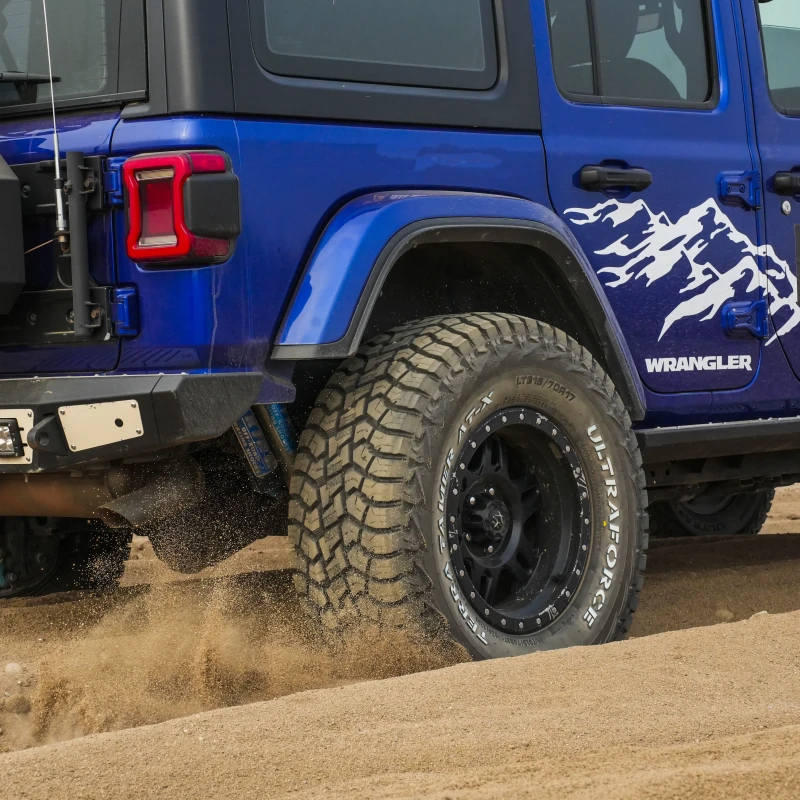
Fuel Efficiency and Environmental Impact
When comparing all terrain (AT) and all season (AS) tires for fuel efficiency and environmental impact during winter driving, several factors come into play:
Rolling Resistance and Fuel Efficiency:
Case Example:
Fuel Economy Tests: Comparative fuel economy tests conducted by automotive experts have demonstrated that vehicles equipped with all season tires achieve slightly better fuel efficiency ratings in winter conditions compared to vehicles fitted with all terrain tires. The difference in rolling resistance plays a significant role in determining overall fuel consumption and environmental impact.*
All Season Tires: All season tires are typically engineered with lower rolling resistance compared to all terrain tires. Lower rolling resistance reduces the energy required to propel the vehicle forward, resulting in improved fuel efficiency and reduced carbon emissions. This advantage makes all season tires a preferred choice for drivers prioritizing fuel economy during winter conditions.
All Terrain Tires: All terrain tires often feature more aggressive tread patterns and larger tread blocks designed for enhanced traction on challenging terrain, including snow and off-road conditions. While these features contribute to superior grip and performance, they may increase rolling resistance and impact fuel efficiency to a certain extent.
Environmental Impact and Sustainability:
Case Example:
Life Cycle Assessments: Life cycle assessments conducted by environmental organizations evaluate the overall environmental impact of tire production, usage, and disposal. These assessments highlight the importance of choosing tires that balance performance requirements with sustainability goals, considering factors such as raw material extraction, manufacturing emissions, and end-of-life recycling.*
All Season Tires: All season tires are designed to provide versatile performance across different seasons, minimizing the need for frequent tire changes and reducing overall environmental impact. Their balanced design supports sustainable driving practices by optimizing fuel efficiency and extending tire lifespan through regular maintenance.
All Terrain Tires: All terrain tires, while robust and capable in winter conditions, may have a higher environmental impact due to their specialized construction and aggressive tread designs. The manufacturing processes and materials used in all terrain tires can contribute to increased carbon footprint compared to more versatile all season tire options.
Performance Trade-offs and Driving Experience:
Case Example:
Driver Satisfaction Surveys: Feedback from drivers who use all terrain tires in winter conditions often highlights satisfaction with enhanced traction and performance capabilities, despite potential trade-offs in fuel efficiency and comfort. Driver testimonials underscore the importance of tire selection based on individual driving preferences and environmental considerations.*
All Season Tires: All season tires offer a balanced driving experience with consistent performance across various weather conditions, including light to moderate snow. Drivers benefit from predictable handling, reduced road noise, and enhanced comfort during daily commuting and occasional winter travel. These tires provide a practical solution for drivers seeking year-round convenience without compromising safety or efficiency.
All Terrain Tires: All terrain tires excel in off-road and winter driving scenarios, delivering superior traction and durability on snow-covered roads and challenging terrain. While they may exhibit slightly higher rolling resistance and road noise compared to all season tires, they enhance vehicle stability, off-road capability, and driver confidence in adverse winter conditions.
Control and Stability
Handling and stability on icy roads are critical considerations when evaluating the performance of all terrain (AT) and all season (AS) tires for winter driving:
Traction and Grip:
Case Example:
Comparative Tests: Controlled tests conducted by tire manufacturers and independent laboratories consistently demonstrate that vehicles equipped with all terrain tires exhibit improved handling and stability on icy roads compared to vehicles fitted with all season tires. These tests emphasize the importance of tire technology and design in enhancing safety and performance during winter travel.*
All Season Tires: All season tires provide adequate traction on icy roads due to their moderate tread patterns and rubber compounds optimized for varying weather conditions. They offer predictable handling and stability during light to moderate snowfall, supporting safe braking and cornering maneuvers on icy surfaces. However, their performance may diminish in severe winter conditions requiring enhanced traction capabilities.
All Terrain Tires: All terrain tires are engineered with aggressive tread designs and specialized rubber compounds designed to maintain traction on icy roads. They feature deeper tread blocks and siping patterns that bite into snow and ice, providing superior grip and stability. All terrain tires certified with the Three-Peak Mountain Snowflake (3PMSF) symbol meet stringent standards for winter performance, ensuring safe handling and reduced risk of skidding on icy surfaces.
Braking Performance:
Case Example:
Field Tests: Real-world field tests conducted by automotive safety organizations and tire manufacturers highlight the superior braking performance of all terrain tires on icy roads. Vehicles equipped with all terrain tires certified with the 3PMSF symbol demonstrate reduced stopping distances and enhanced stability during emergency braking maneuvers, showcasing their reliability in winter conditions.*
All Season Tires: Braking performance on icy roads with all season tires can vary depending on tread wear, tire age, and specific road conditions. While all season tires offer acceptable braking capability in light to moderate snow, stopping distances may increase on icy surfaces, requiring cautious driving and increased stopping distances.
All Terrain Tires: All terrain tires are designed to optimize braking performance on icy roads, thanks to their aggressive tread patterns and winter-specific rubber compounds. They provide shorter braking distances and improved stopping power compared to all season tires, enhancing safety and responsiveness in critical winter driving situations.
Driver Confidence and Control:
Case Example:
User Feedback: Feedback from drivers who use all terrain tires underscores their satisfaction with improved handling and control on icy roads. Drivers report increased confidence during winter travel, citing enhanced traction and stability as key benefits of choosing all terrain tires for severe winter conditions.*
All Season Tires: All season tires offer reliable handling and driver confidence during daily commuting and occasional winter travel. They provide a balanced driving experience with predictable steering response and reduced road noise, contributing to overall comfort and control on icy roads. Drivers benefit from enhanced vehicle stability and minimized risk of skidding in moderate winter conditions.
All Terrain Tires: All terrain tires enhance driver confidence and control on icy roads through their robust construction and specialized tread designs. They enable precise steering response, improved traction, and superior grip, allowing drivers to navigate challenging winter environments with enhanced safety and stability. All terrain tires are preferred by drivers who prioritize off-road capability and reliability in severe winter conditions.
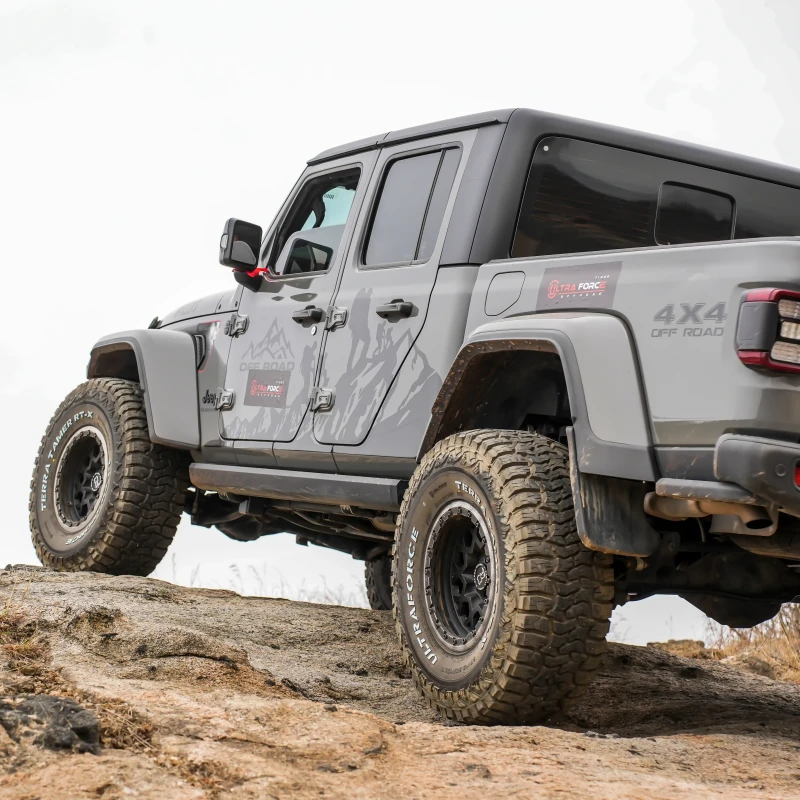
Maintenance Precautions
Maintaining all terrain (AT) and all season (AS) tires during winter involves specific considerations to ensure optimal performance, safety, and longevity:
Tire Pressure and Inflation:
Case Example:
Tire Maintenance Guides: Guidelines provided by tire manufacturers and automotive experts outline recommended tire pressure ranges and inflation practices for all season and all terrain tires during winter. Following these maintenance protocols helps drivers maintain optimal tire performance and safety throughout the season.*
All Season Tires: Regularly check tire pressure and maintain recommended inflation levels as specified by the vehicle manufacturer. Cold temperatures can cause tire pressure to drop, affecting handling, traction, and fuel efficiency. Properly inflated tires ensure consistent performance and reduce the risk of uneven wear or damage during winter driving.
All Terrain Tires: Monitor tire pressure more frequently for all terrain tires, especially when transitioning between off-road and winter driving conditions. Adjust tire pressure based on terrain requirements and load capacity to optimize traction and stability. Proper inflation enhances tire durability and minimizes the risk of punctures or sidewall damage in challenging winter environments.
Tread Depth and Wear Patterns:
Case Example:
Tread Wear Analysis: Analysis of tread wear patterns and depth measurements conducted by tire specialists demonstrates the impact of driving habits and terrain conditions on tire longevity. Monitoring tread depth and wear indicators allows drivers to identify potential issues early and take proactive measures to maintain tire performance and safety.*
All Season Tires: Inspect tread depth regularly using a tread depth gauge or visual inspection method. All season tires feature moderate tread patterns designed to provide adequate traction across different seasons, including light snow. Monitor tread wear indicators to assess tire condition and replace tires as needed to maintain safety and performance during winter driving.
All Terrain Tires: Evaluate tread depth and wear patterns more frequently for all terrain tires, particularly after off-road excursions or extended winter travel. Aggressive tread designs and larger tread blocks enhance traction but may wear more quickly on paved roads and icy surfaces. Rotate tires according to manufacturer recommendations to promote even wear and extend tread life.
Alignment and Balance:
Case Example:
Alignment Maintenance: Maintenance records and service logs from vehicle owners highlight the importance of regular tire alignment and balancing for all season and all terrain tires during winter. Scheduled alignments help drivers maintain optimal vehicle performance and handling characteristics, contributing to safe and reliable winter driving experiences.*
All Season Tires: Schedule regular tire alignments and balance checks to optimize vehicle handling and reduce tire wear during winter. Proper alignment ensures even distribution of weight across tires, enhancing stability and steering response on snow-covered roads. Addressing alignment issues promptly minimizes uneven tread wear and extends tire lifespan.
All Terrain Tires: Align all terrain tires according to manufacturer specifications, considering off-road driving conditions and winter travel requirements. Off-road excursions and uneven terrain can affect tire alignment over time, leading to steering instability and reduced traction on icy surfaces. Maintain balanced tire rotation schedules to preserve alignment and promote consistent performance.
Understanding the differences between all terrain and all season tires in winter conditions involves evaluating performance metrics, safety standards, environmental impact, and maintenance considerations. By considering these factors and aligning tire selection with individual driving needs, drivers can make informed decisions to enhance vehicle safety, performance, and comfort during winter travel. Whether prioritizing off-road capability, fuel efficiency, or handling characteristics, selecting the right tires contributes to a safer and more enjoyable driving experience throughout the winter season.
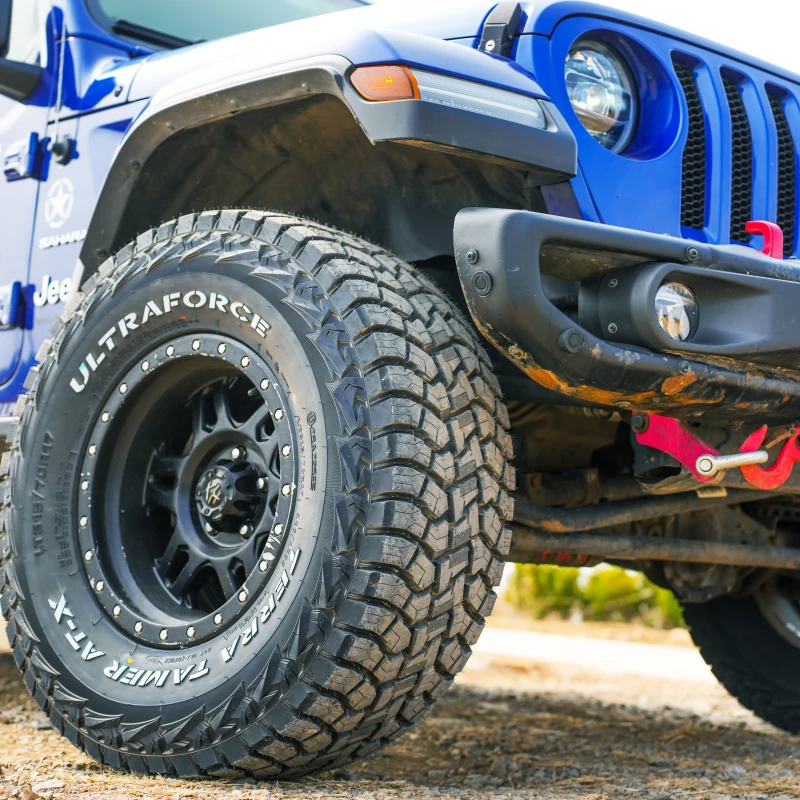
UltraForce Tires: Engineering Excellence for Every Terrain
At UltraForce Tires, we pride ourselves on delivering superior tire solutions that exceed expectations in performance, durability, and safety across diverse road conditions, including challenging winter environments. Here’s why UltraForce Tires stands out:
Performance Excellence: Our tires are meticulously engineered to provide exceptional traction and handling, whether you’re navigating icy highways or exploring snow-covered trails. We integrate advanced technologies and innovative tread designs to optimize performance in all weather conditions.
Customization Options: We offer tailored tire solutions, including customized tread patterns, sidewall designs, and sizes, to meet the unique demands of your vehicle and driving environment. Our commitment to customization ensures you receive tires that maximize performance and durability.
Global Expertise and Quality Assurance: With decades of experience in tire manufacturing and global export, UltraForce Tires adheres to stringent quality control measures and industry standards. Our state-of-the-art production facilities and dedicated research teams ensure each tire meets the highest standards of safety and reliability.
Customer-Centric Approach: At UltraForce Tires, we prioritize customer satisfaction and safety. We provide comprehensive support and guidance to help you select the right tires for your specific driving needs, ensuring you experience unmatched performance and peace of mind on every journey.
Making the Right Choice for Winter Driving
In conclusion, the choice between all terrain and all season tires for snow conditions hinges on understanding their unique features, performance characteristics, and suitability for your driving environment. All season tires offer versatility and convenience across varying weather conditions, while all terrain tires excel in providing enhanced traction and durability, particularly in winter and off-road scenarios.
For drivers seeking optimal performance, safety, and reliability during winter months, UltraForce Tires offers a range of high-quality tire solutions designed to elevate your driving experience. Contact us today to explore our comprehensive tire options and discover how UltraForce Tires can enhance your journey with ‘U’(you mean a lot to us). Drive with confidence, knowing you have the support of tire experts dedicated to engineering excellence and customer satisfaction.
Choose UltraForce Tires for your next winter adventure and experience the difference in performance, durability, and safety. Your journey begins with the right tires—crafted to conquer any terrain and weather condition with unparalleled reliability and precision.
